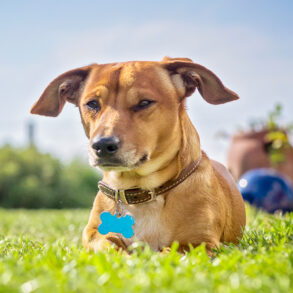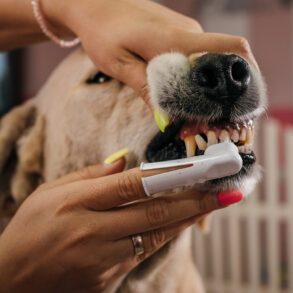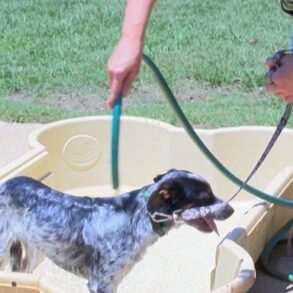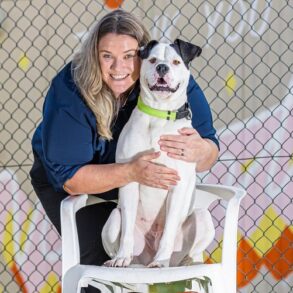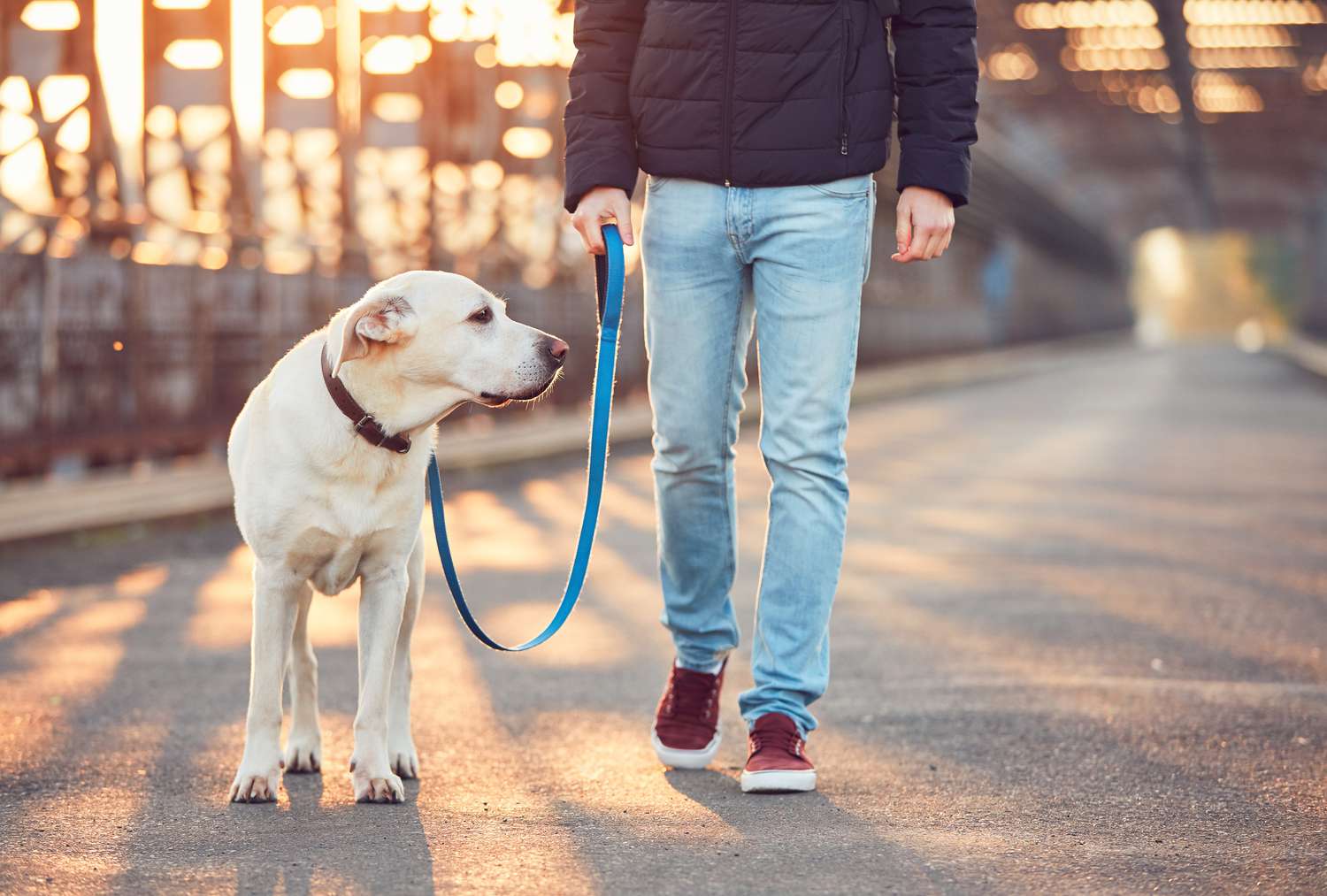
For many dogs, going for a walk can be a highlight of their day. But as a pet parent, there are a few things to keep in mind before you head out the door. Dogs’ need for exercise varies depending on their age, size, and breed. You should also choose activities that suit your dog’s personality, medical conditions, and interests.
We talked to veterinarians and canine behavior experts to learn how often to walk your dog.
The Importance of Exercise for Dogs
The beenfits of walking your dog are plenty (for both your dog and you!)
“Taking at least one outing or dedicated exercise time per day will help keep your dog physically fit and give her opportunities to explore the world,” says Carly Loyer, Ph.D., Research Manager on the ASPCA Behavioral Sciences team, noting that walks help with weight management, joint health and digestion.
But it’s more than a drawn-out potty break. Walks aren’t only about physical exercise but also about mental exercise, allowing your furry friend to explore the great outdoors, even if just walking down the sidewalk.
“Your dog’s brain will get more stimulation if you follow different routes and visit new places whenever you can so that your dog can experience novel smells and sights,” Loyer says. This is true even for many dogs that live in homes with a yard that they are allowed to roam.
“Most dogs don’t tend to play by themselves, and your dog may not get enough physical or mental exercise if their only outing is to wander around the lawn.” A quick walk around the block does a doggie body (and mind) good.
How Often Should You Walk Your Dog?
“Dogs, just like humans, are healthier with regular cardiovascular exercise,” says Sarah Machell, DVM, a veterinarian at Vetster. “Most adult dogs will need somewhere between 30 minutes and two hours of exercise per day, however, precisely how much daily exercise a dog needs is dictated by a variety of factors including their age, breed, size, and general health status.”
To get the most benefit out of each walk with your dog, there are a few factors to consider before you leash up and head out. While these are general guidelines, if you have any concerns about your pet specifically, you should reach out to your vet.
Age
“For puppies, introducing an exercise routine is important because it helps to build a positive emotional loop,” Machell says. “As you then build on their stamina and growth, you can gradually increase the length and duration of walks as they get older.” Teaching your puppy to walk on a leash and developing a consistent routine is beneficial for both of you.
Machell notes at the “teenage” years of the puppy stage—when your dog is between about three and nine months old—you have to consider your dog’s considerable energy. She said some owners try to overcompensate and wear out their dogs by taking them on really long or really vigorous walks.
“You can walk them for an extended period of time if they have the stamina and the energy, but walk them at their own pace. Your dog is not just going to stand beside you and run a 10K without a break.”
Machell suggests avoiding the pounding, repetitive movements that come with running until their bone growth is complete. Extremely vigorous exercise in puppyhood is also linked with an increased risk for elbow and hip dysplasia in dogs.
With older dogs, Machell says, it’s also important to pay attention to their cues, as there will come a point when they won’t have the stamina they once did.
“It’s important to recognize that their desire to please is going to be really high but can disregard what their physical bodies are trying to tell them.”
It is not unusual that the amount of time and distance would change. Older dogs often need shorter, more frequent walks.
Size
Size can be a factor, especially if you have a large breed dog. “These dogs have a greater chance of developing orthopedic issues,” Machell says. “Studies have shown that if you over exercise at a young age it can increase the risk of developing arthritic problems later in life.”
Machell also notes that you shouldn’t assume that smaller dogs need smaller walks. “It’s just not true. They may get more tired out, but they can often go just as far as a big dog can. They are just taking three times as many steps, so understand that they’re probably a little more fatigued from that type of exercise than a large breed dog would be.”
Overall Health
There are several health and environmental conditions that can make long or speedy walks difficult for dogs. Some common factors include:
Living Conditions
A dog’s need for exercise doesn’t change depending on their home environment, it’s just a matter of how your dog might get that exercise.
“Some pet owners who live in a smaller, urban environment might explore other opportunities like using treadmills or checking out swimming parks to get their dog some exercise,” Machell says. “People like myself who live on a farm, can open the door and let your dog explore. In a small environment, owners have to be a little more creative and thoughtful about how their dogs get that exercise in.”
Additional Dog Walking Tips
Here are some expert tips for how to keep daily walks safe and exciting for you and your dog.
Mix Up Your Route
Loyer says mixing up your route when walking is a good idea. You and your dog will love to see new scenery—and of course, smell new smells—if you change your route every now and then.
Stay Alert
While walking your dog may be routine, it’s important for you as the dog owner to be aware of your surroundings at all times.
“While it’s tempting to zone out or take a conference call while you’re out walking, that’s not always safe,” Loyer cautions. “You should be able to keep an eye on your surroundings, and don’t assume that everyone you come across should meet your dog.”
Invest in Dependable Walking Supplies
Because you walk your dog every day, appropriate walking gear is essential. All dog owners should have a harness, a dog ID tag, a sturdy leash, comfortable walking shoes (for you, of course), and plenty of poop bags.
Look for a collar or harness that fits properly and has not been chewed on or damaged in any way. Loyer says you also want to look for the right width on the collar or harness, as wider fabric disperses pressure across a larger area of your dog’s body, which may be safer and more comfortable especially for larger or stronger dogs.
Ensuring your dog’s ID tag is along for the walk is critical, too.
“Some pet owners may want to attach their dog’s collar to the harness with a separate clip or carabiner, in the event they slip out of either one,” Loyer says. “It is a great idea to have your dog microchipped but a microchip is not a substitute for an ID tag.”
This post was originally published on this site be sure to check out more of their content.





















